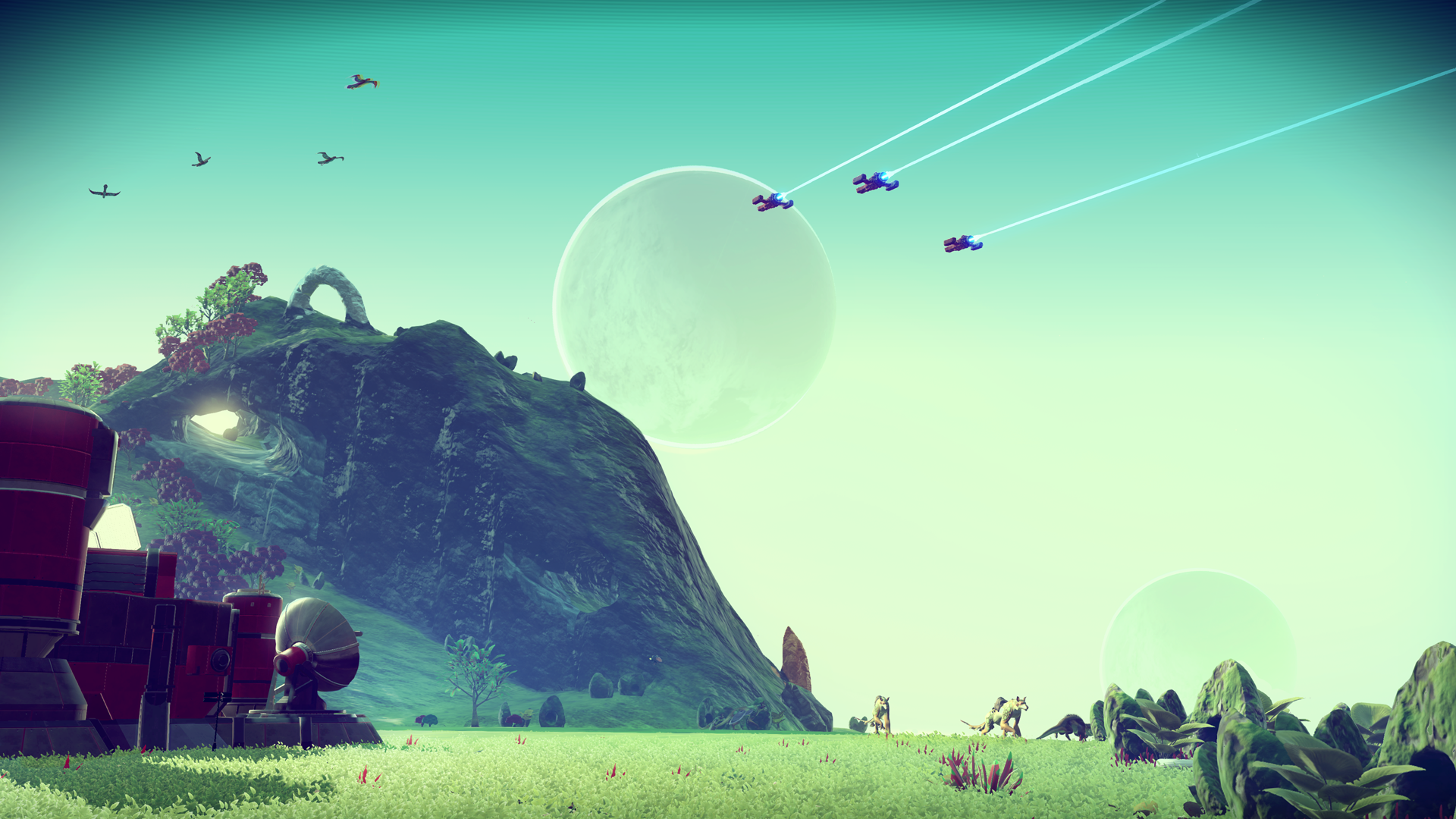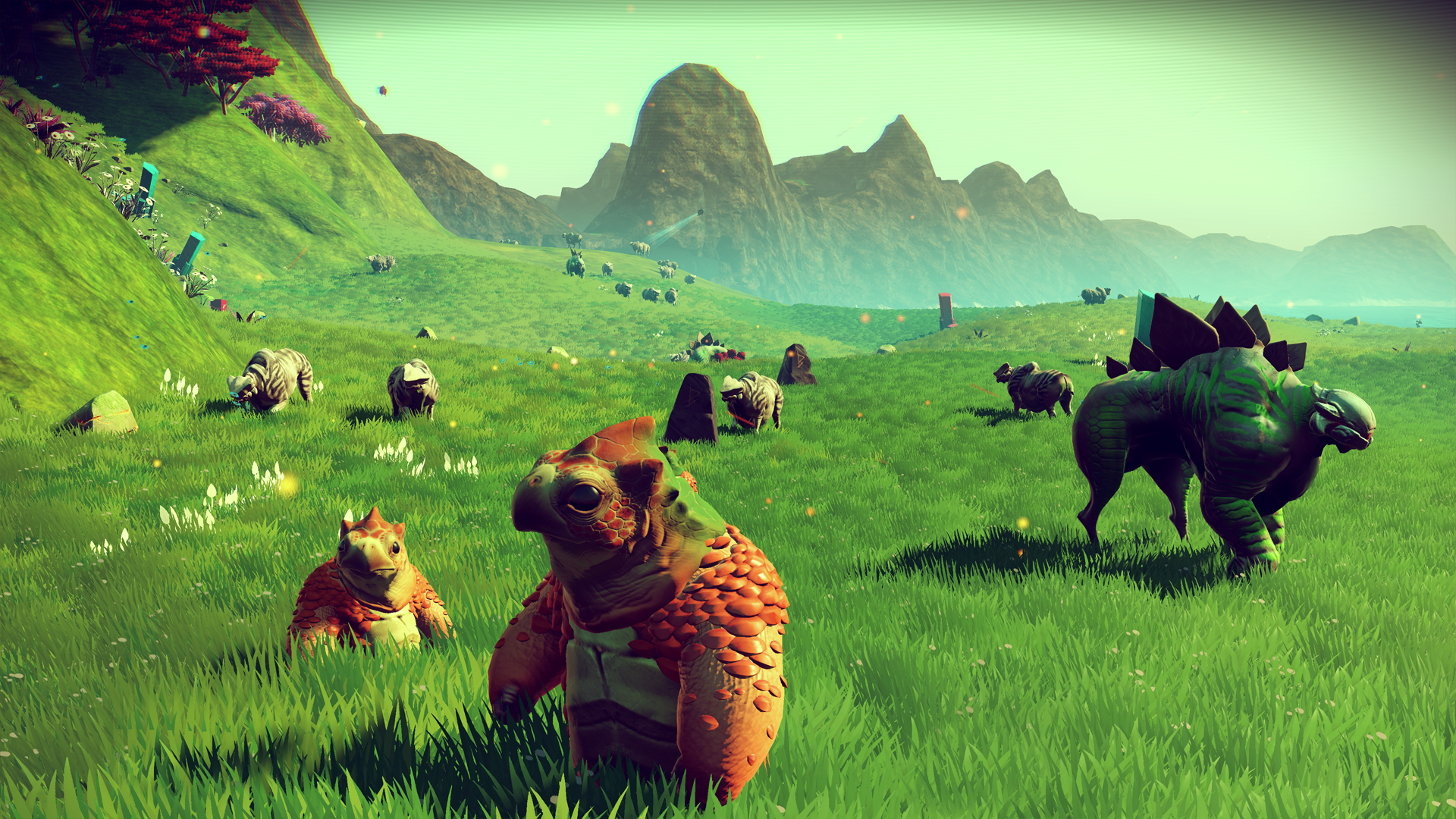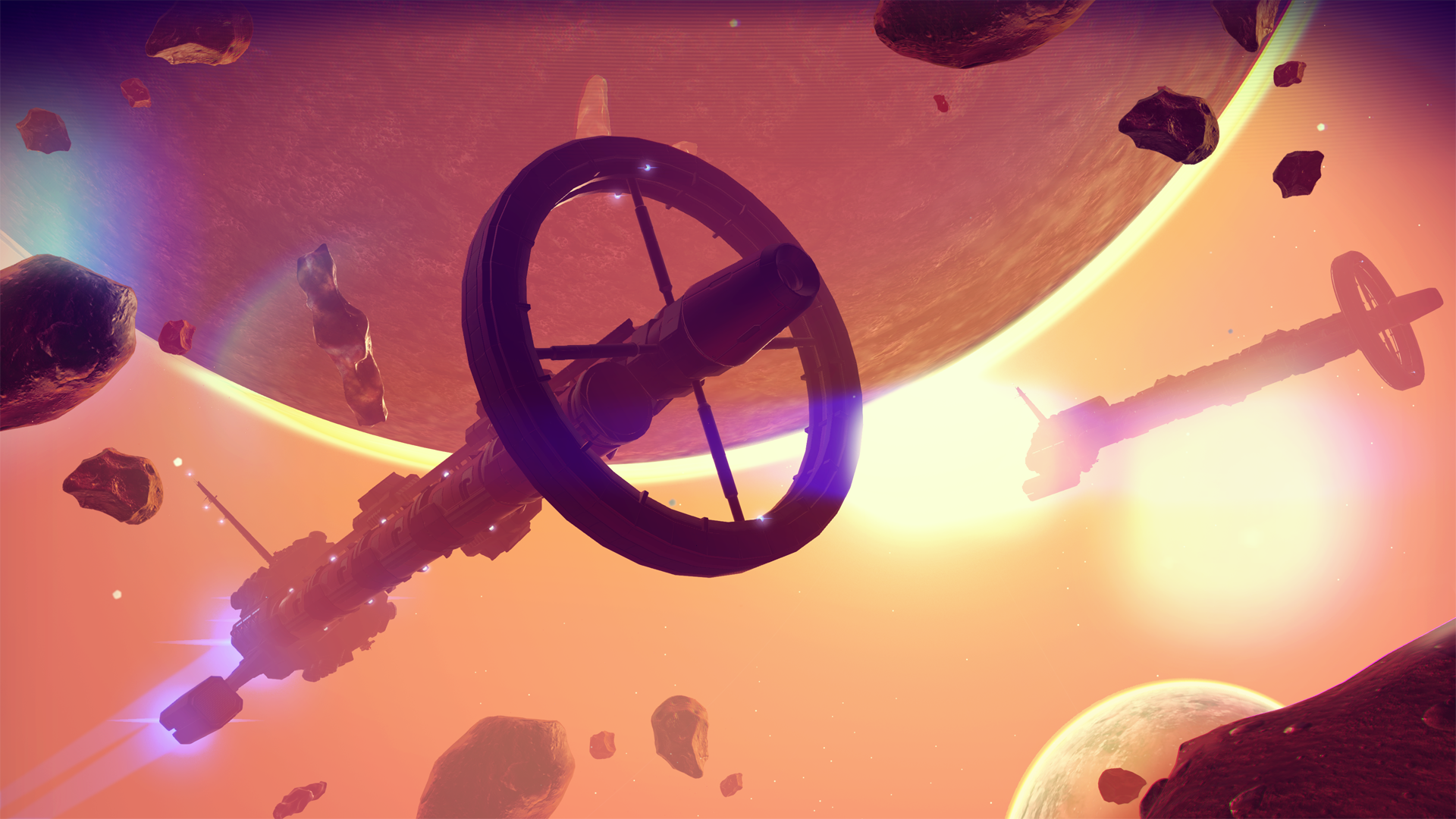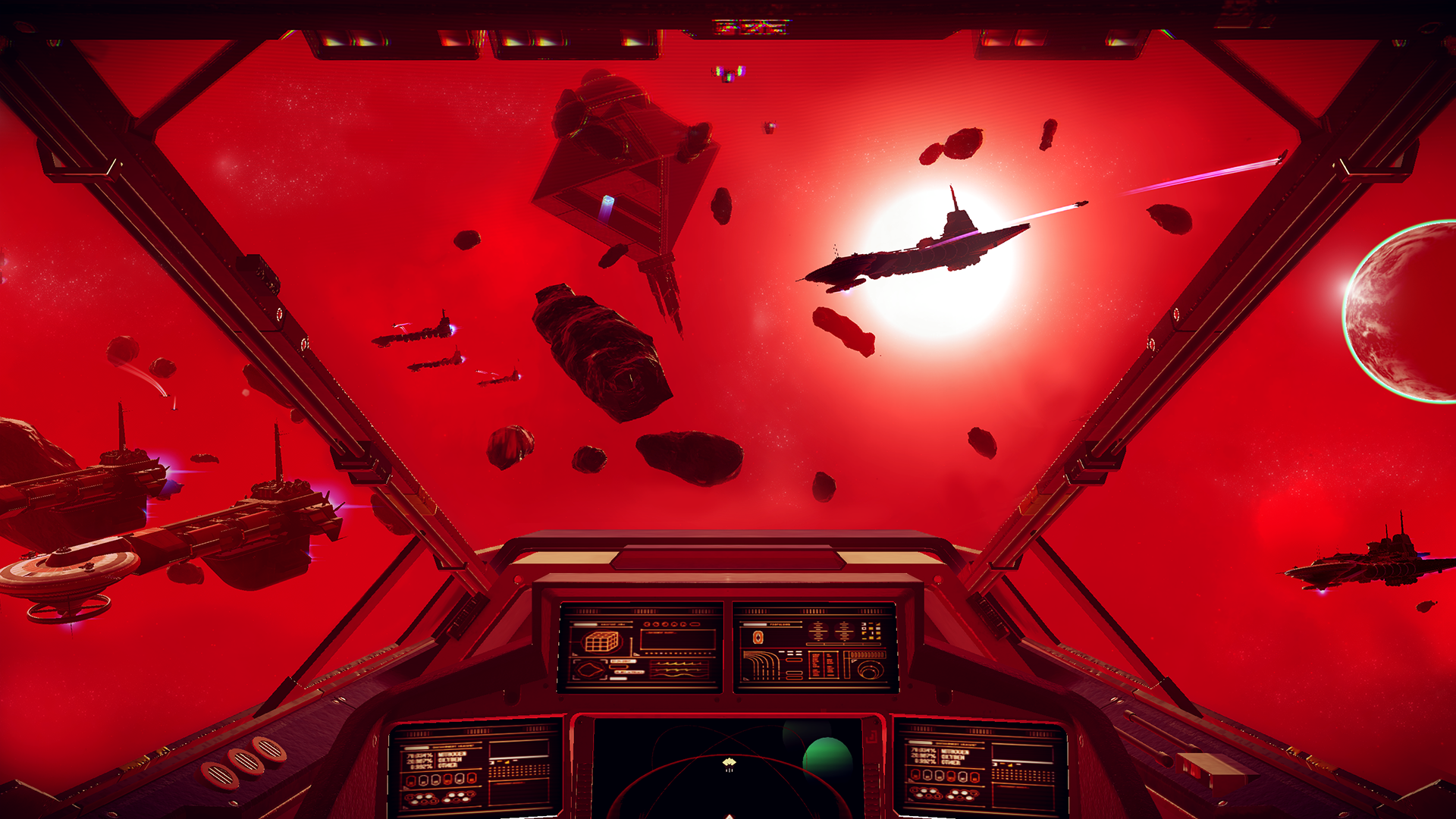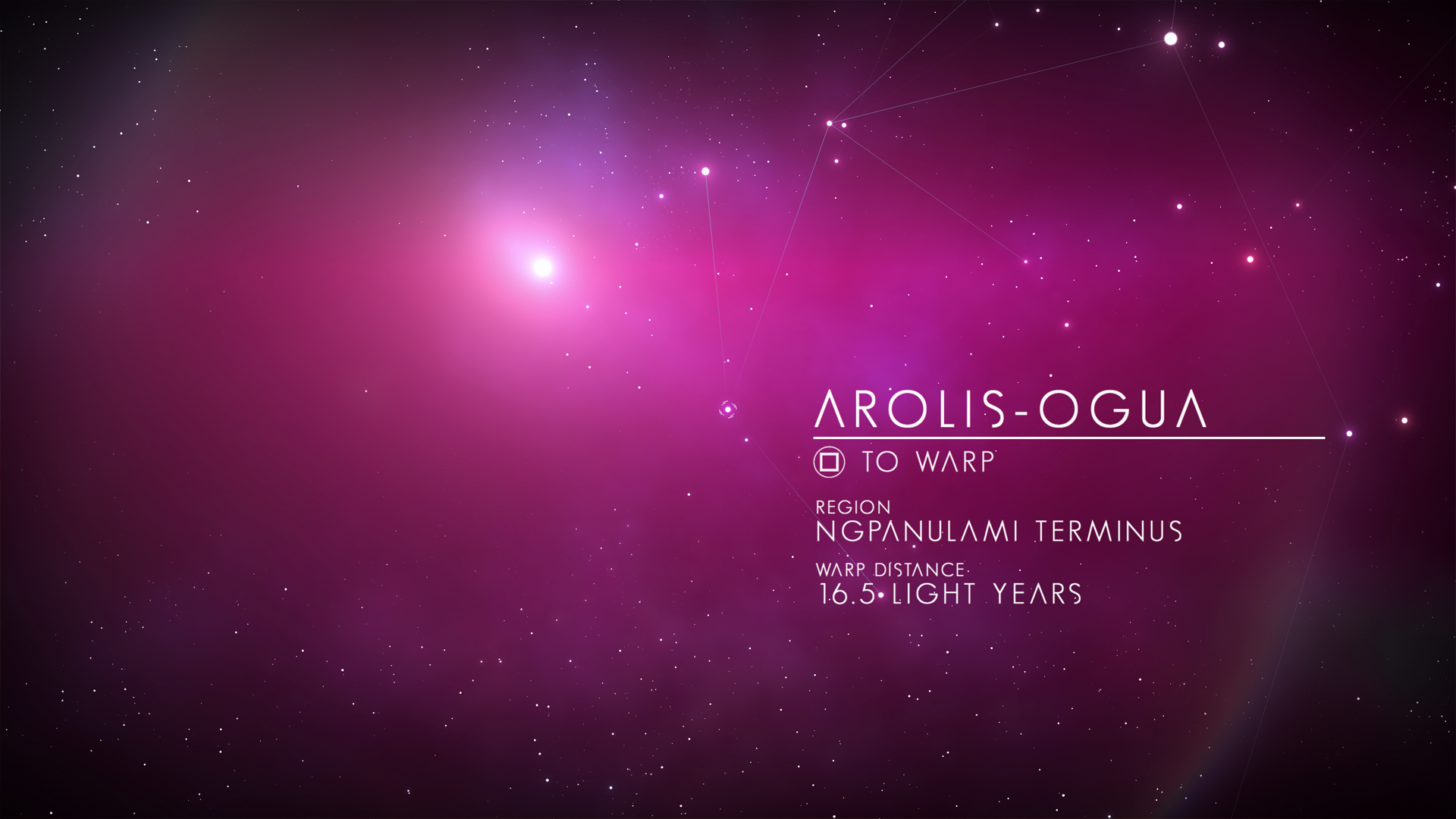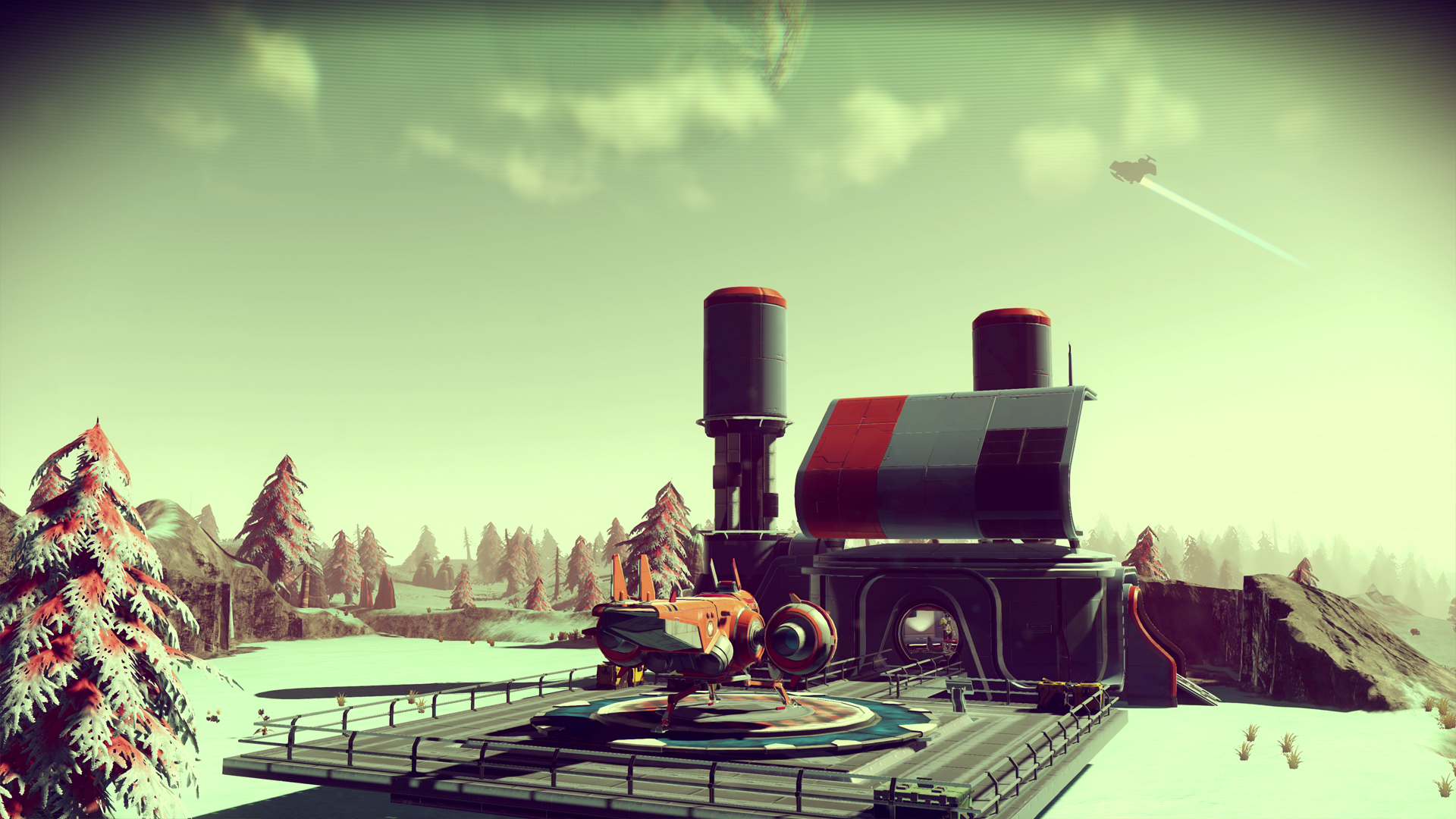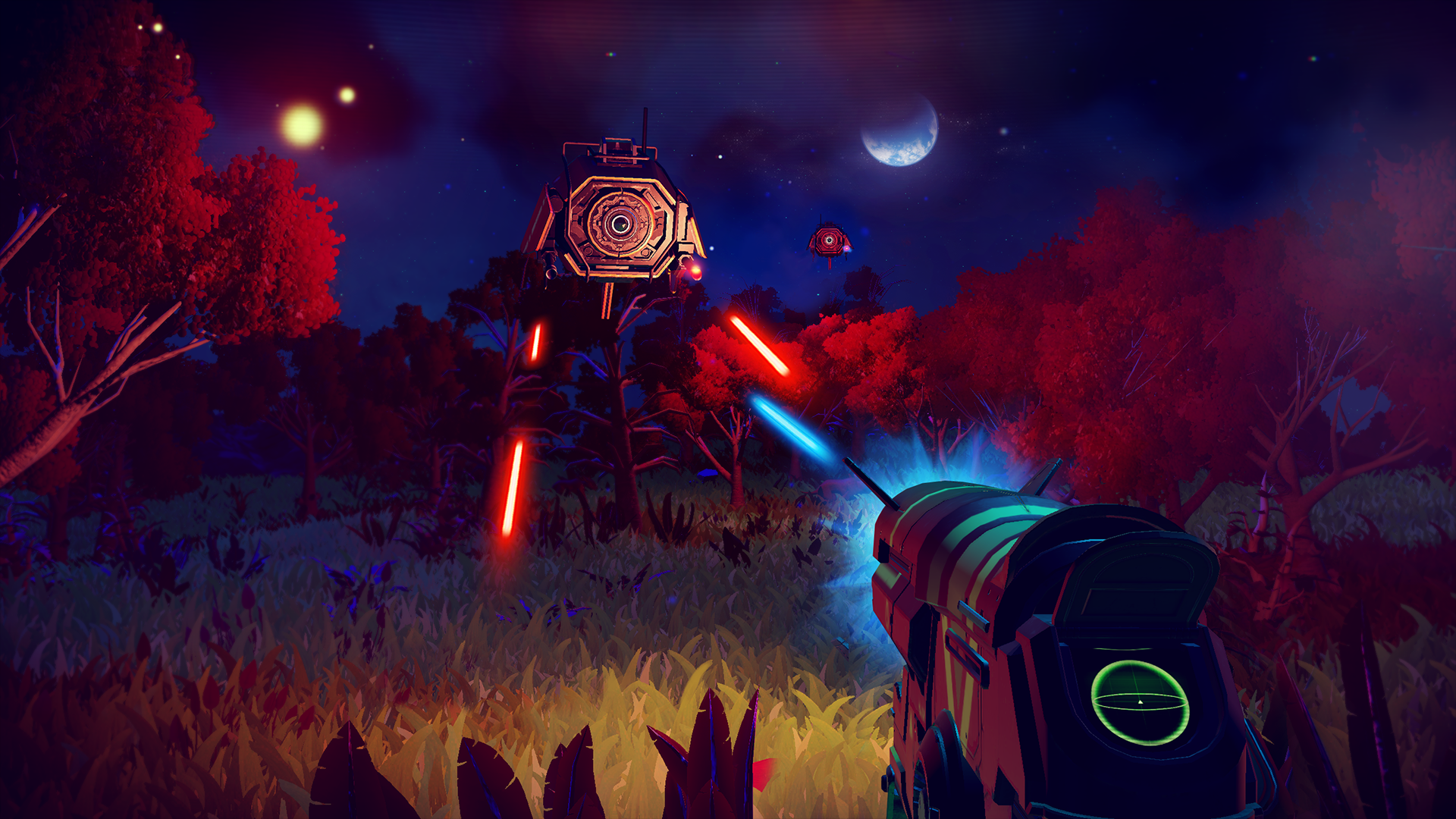No Man's Sky needs no introduction: it's one of the 2016's most-hyped games, thanks to a scale and ambition which is possibly unmatched in the history of videogames. For this space-age epic boasts a game-world that consists of more than 18 quintillion planets. Yes, you read that right.
Our quick take
After our limited initial amount of time with the game, we are well and truly hooked. Even just a couple of hours with No Man's Sky it becomes obvious that it is a major triumph - as long as you don't see constant, full-on action as a gaming pre-requisite.
It's indisputably original, and really makes you feel like a space-pioneer, exploring vast expanses of space which, while often inhospitable are never less than thoroughly inviting. It's a game you can lose yourself in, and certainly achieves its aim of generating a state of constant wonderment.
Quite why Sony and Hello Games didn't have the confidence to show No Man's Sky to anyone before launch is inexplicable. Watch this space and, when we've explored it more fully over a number of weeks, we'll be able to tell you just how good it is and whether it's a true contender for game of the year.
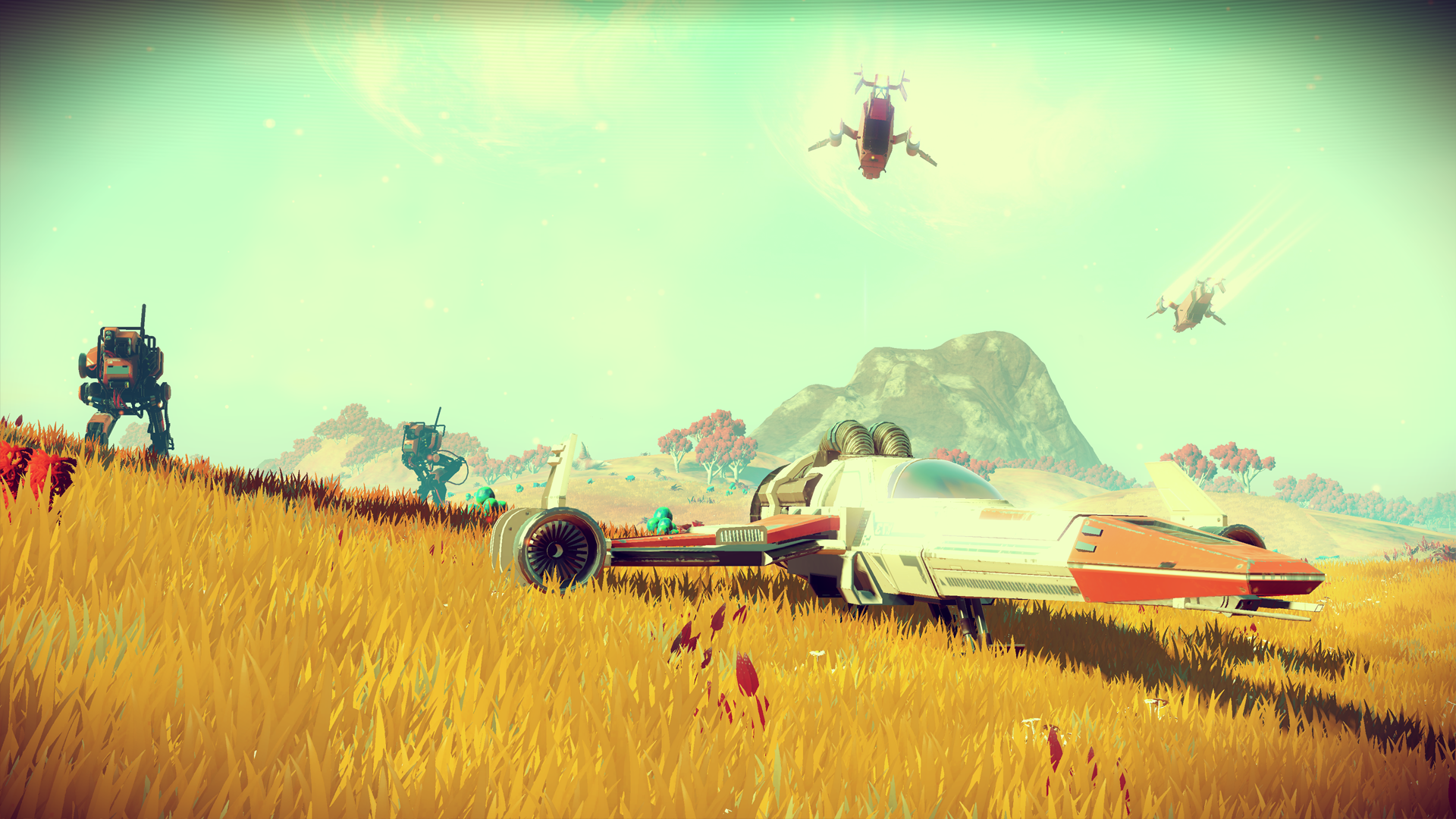
No Man's Sky p
| FOR | AGAINST |
|---|---|
|
|
|
No Man's Sky
It also boasts a back-story that epitomises the very best of British indie development - tiny team conceives something which is stunningly original, inducing Sony to put its considerable resources behind - and an eye-popping art-style that references 1960s and 70s pulp-sci-fi book covers.
But beyond its undoubted technological achievements, what is it like as a game, and is it any good? We're 10 hours of fun in...
No Man's Sky review: Never-ending play?
Annoyingly, right now we can't answer exactly how good No Man's Sky is with any degree of definitiveness. This game is the latest victim of a disease which has taken hold of the games industry this year: having not been allowed a single second of play time during its development period, we finally received review code at roughly 2pm on Monday August 8 - the day before No Man's Sky hit the shops in the UK.
Having foregone sleep for your edification, though, we can at least present our first impressions. A full review will follow when we've had the time to assess every aspect of the game (and especially the robustness of its servers, a topic which has generated some early unease). Well, almost every - we'll never see every planet, because nobody will, not even the game's developers.
First impressions, at least, are good - very, very good. One aspect of No Man's Sky which remained completely unseen, no matter how many gorgeous-looking "sizzle" videos Sony used it to make, was a fairly major one: its gameplay.
Happily, it turns out that it actually does have gameplay beyond mere exploration, which is very enjoyable and massively addictive.
No Man's Sky review: What sort of game is it?
No Man's Sky puts all its players in an identical starting position: on a planet on the fringes of the galaxy, which nobody apart from you has ever visited.
You have a spaceship, but it has obviously crashed and is non-functional, so your first task is to get it going again. You do that by mining elemental resources (carbon, plutonium, iron and the like), which are acquired by blasting rock outcrops and vegetation with your multi-tool, a laser which also doubles as gun.
Hand-holding is kept to a minimum, although you have a bit of guidance from a mysterious red orb with connection to the Atlas, an alien race which, so the game hints, was instrumental in bringing civilisation to the galaxy. You also find jettisoned pods containing resources and useful items that can be used for crafting.
At first, it's all about resource-gathering, exploration and crafting, and those remain the pillars of No Man's Sky's gameplay throughout: but there's an awful lot more to it than that.
You soon discover that you can scan plants and animals (as long as you have the scanner element of your multi-tool running), for which you're rewarded with in-game currency. As you are for uploading planets you've discovered and even waypoints on those planets to the server (everyone who plays No Man's Sky will be traversing a single instance of the same game).
In practice, because everyone starts at a unique point, and because of the insane number of planets involved (according to developer Hello Games, if you visited every planet for a second, it would take you 565 billion years to get to all of them), every planet you chance upon is previously unknown.
No Man's Sky review: Early stages
In the game's early stages, one aspect swiftly generates mild annoyance: the inventory system.
Your multi-tool and your spaceship have defined numbers of inventory slots, and you can move items between the two easily, but until you discover which elements are the most useful in which situations (zinc and platinum, for example, are handy for fuelling your life-support and anti-radiation systems, while plutonium is required for ship-related crafting), you soon fill those slots and have to decide what to drop and what to keep.
The situation is alleviated when you begin to acquire better multi-tools and spaceships, and you soon crave the relief of finding traders who will convert your unwanted junk into hard cash. So what initially feels like a pain turns out to be a subtle way of introducing you to the full depth of a game. At every turn, No Man's Sky exhibits clever touches.
No Man's Sky review: What's it like to play?
Once you fix your spaceship's engine, the fun really starts. It's pretty easy to fly: there's one control for take-off, and then you can accelerate and brake with buttons using the basic impulse drive; landing is automatic and involves a single button-press.
To exit a planet and head into space, just point your spaceship's nose straight upwards and hit the gas. You can also trigger a pulse-jump, which sees you travelling super-fast, with Star Trek warp drive-style visuals to match (which can be triggered in space or within planets' atmospheres).
In the initial stages of the game, you're given a few highlighted destinations, the first of which is a space-station. There you meet your first alien (in our case, a member of the Vek species - your experience will be different), with whom you can trade, and you start picking up transmissions from places worth investigating, as well as blueprints for new technology - perhaps the most important of which is a hyper drive.
Now your ship is at least able to explore the local solar system, you can get down to the serious business of seeing what planets have to offer, and there's plenty to do.
Even without small hints about areas you might want to check - which the game gives you frequently - cruising about above the surface of planets bears fruit, as you discover structures which, depending on their nature, yield different things. There are planetary outposts of various types - manufacturing facilities, for example, give you handy blueprints for crafting things like spaceship parts. To get those, you often have to solve simple logic-puzzles.
No Man's Sky review: Defining your own story
There are ancient ruins which begin to add a bit of narrative thrust: apart from teaching you words from the languages of the local alien race, they give you visions of the Atlas, which fuel your vague, nagging drive to head towards the centre of the galaxy to find out more about the mysterious alien race.
Most buildings you locate give you multi-tool technology (far more than can be equipped at any time), and aliens you meet are great for giving you improved multi-tools - as long as you give them some raw materials by way of a gift.
The next big milestone is discovering how to make and building a hyper-drive for your spaceship. This allows you to make big sub-space leaps, along a defined path (although you can also target random planets), as you start your journey towards the centre of the galaxy. Now, truly, the galaxy is yours to explore - particularly when you work out how to craft the hyper-drive fuel from scratch, which involves turning raw materials into different objects and then, cleverly, combining those.
You'll see echoes from fine games of the past in No Man's Sky. Think of Mass Effect in the resource-gathering, multi-user dungeons in the text-based interaction with aliens and ancient ruins being the most obvious.
There's a Zen-like quality to its gameplay (enhanced by great ambient music), and for anyone who enjoys exploration, it's the stuff of dreams. It's also an almighty universe which, in the manner of the best games, sucks time into its maw. Look at your watch after a pleasant period of bumbling around and you'll find you've been playing for hours.
No Man's Sky review: Unanswered questions
But many questions remain, which we'll answer in the fullness of time.
For example, we haven't yet encountered any human players: what will happen when we do?
We know that as you proceed towards the centre of the galaxy, you must upgrade your ship, and are more likely to encounter hostility (your ship and multi-tool have weapons, which rarely have to be used in your initial forays).
Whether any sort of overt storyline, rather than one which is airily hinted at, will emerge also remains to be seen.
And the effect of hordes of players logging onto servers is also unknown. Although, at first, your only real contact with the game's online side involves uploading your discoveries - be they planets, flora or fauna.

